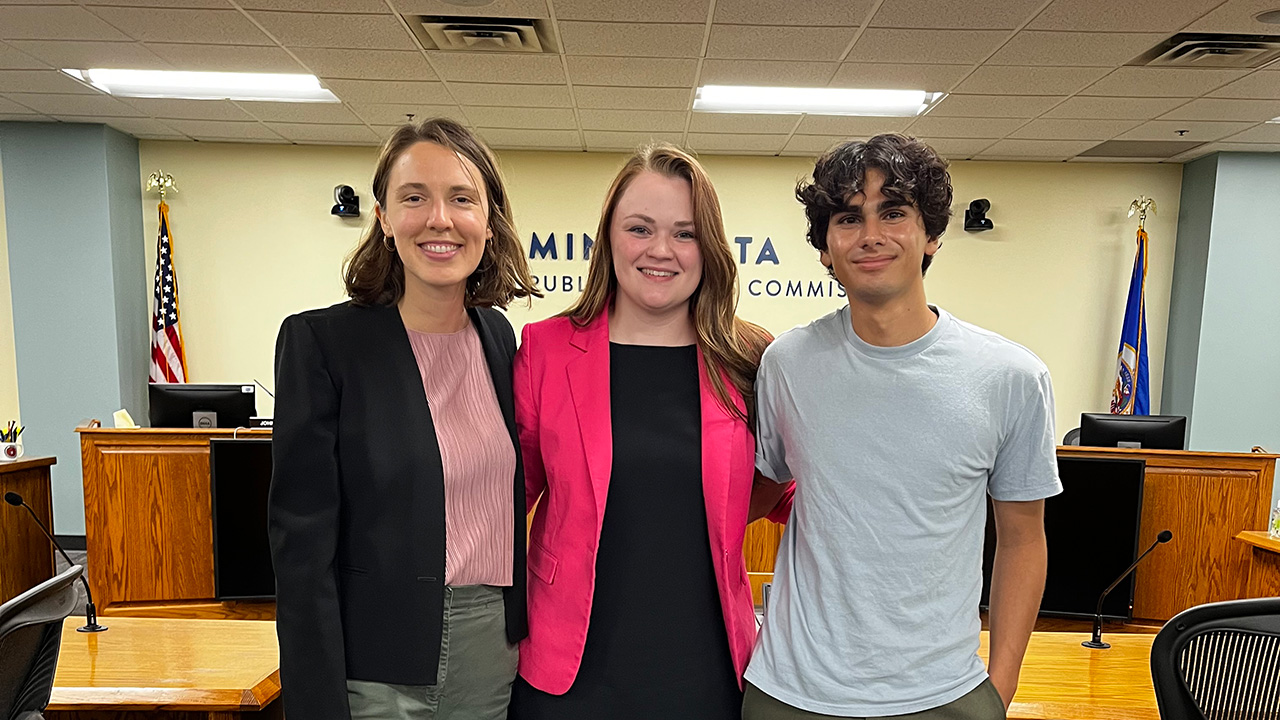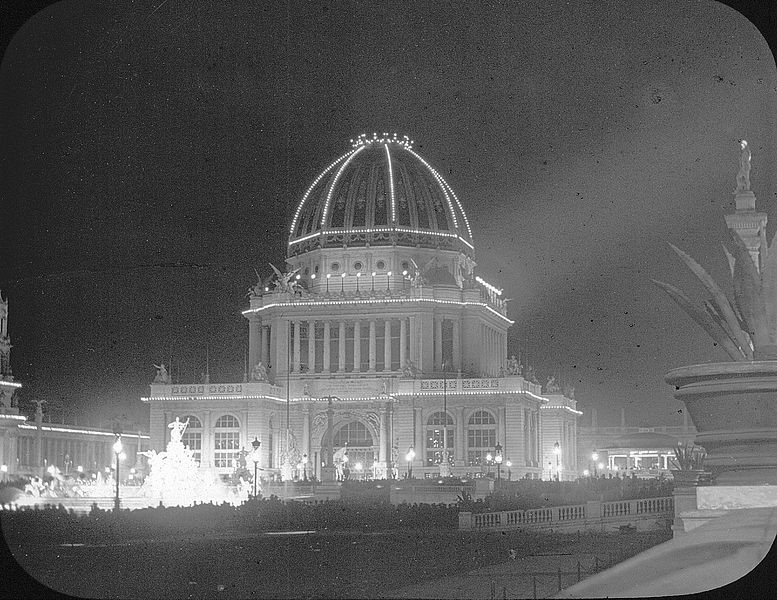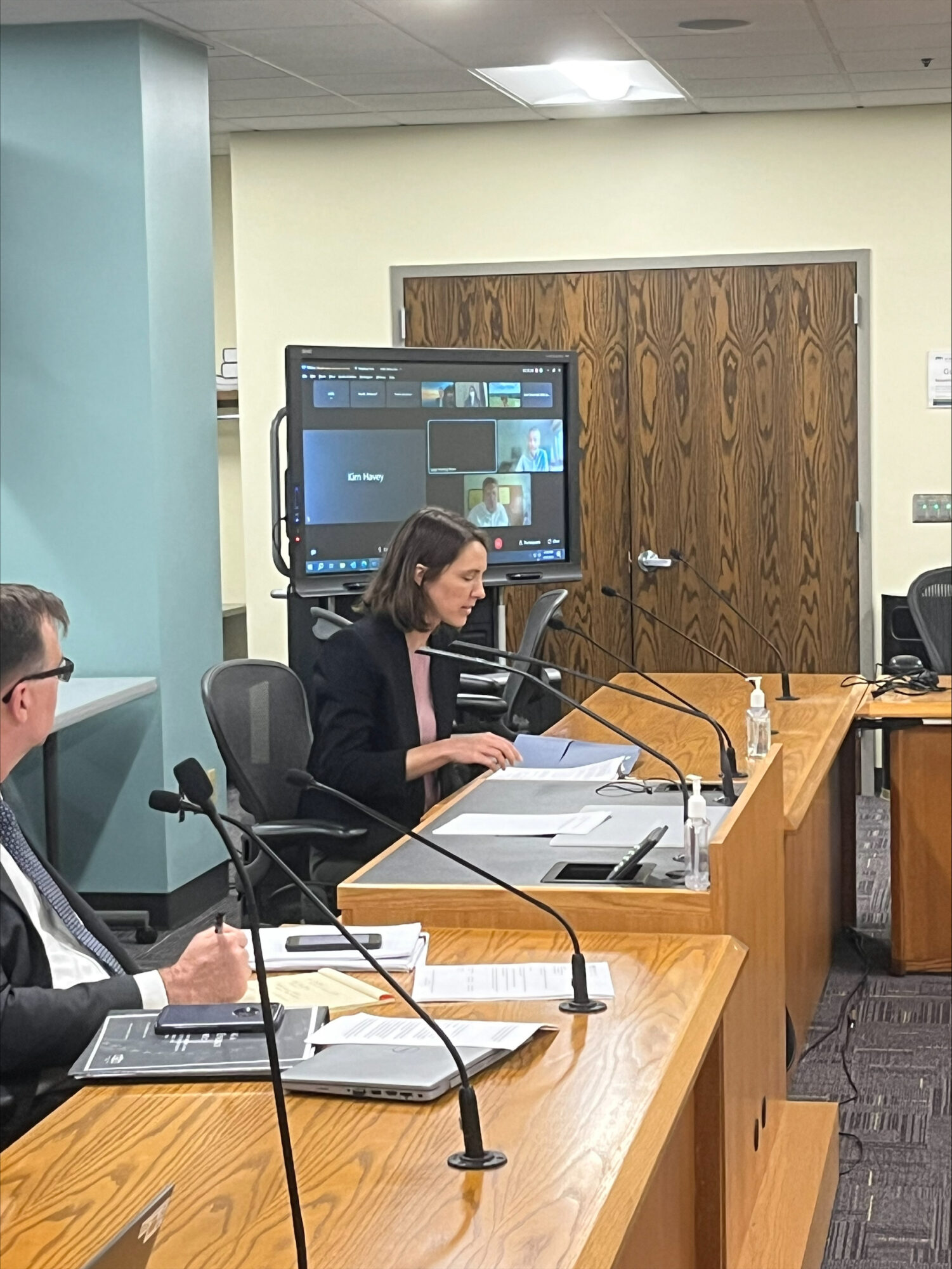
Some of the most important decisions that impact Minnesota’s clean energy future are made at an unassuming venue in downtown Saint Paul.
If you’re familiar with energy and climate policy, you’ve probably waded through long sentences filled with technical terminology. IRPs, LCOE, DERs, NGIA, and so many other acronyms are used often enough in the energy industry that I’ve found it necessary to compile a large list of them in my phone to keep them straight. Similarly, many energy policy decisions occur at the Minnesota Public Utilities Commission, a state regulatory agency with complex proceedings with notices, interventions, prehearings, petitions, testimonies, briefings, proposals, comments, orders, and appeals. Are you still with me?
But behind the complicated language and sometimes hard-to-follow processes, crucial decisions are being made about Minnesota’s energy future.
Why does this matter? Our reliance on burning fossil fuels for electricity generation, to heat our homes, for transportation, and beyond, has led to climate change, prompting an urgent energy transition. This shift to carbon-free and cleaner energy sources across electricity, transportation, building, agriculture, and industrial sectors aims to create an equitable, decarbonized economy for Minnesota by midcentury. Getting there quickly—and choosing an equitable path to get there—is vital.
The Minnesota Public Utilities Commission (PUC, or Commission) is a key player in this transition. The PUC is the state regulatory agency where pivotal decisions about clean energy sources, equitable implementation, and the costs involved are being made. Understanding what the PUC is and how it works is essential for ensuring we create a clean, affordable clean energy future that benefits all Minnesotans.
By reading this post, you’ll gain insights into the PUC’s role, the decisions shaping Minnesota’s energy landscape, and how Fresh Energy advocates for a swift and equitable energy transition.
Let’s dive in! (And I promise, I’ll try to keep the acronyms and technical language relatively minimal.)
What is the Minnesota Public Utilities Commission?
The Minnesota Public Utilities Commission (PUC) regulates the state’s electricity, natural gas, and landline telephone utilities to ensure safety, reliability, and affordability. Created by the Minnesota Legislature, the Commission’s authority is defined by legislative mandates. Its mission is to maintain a regulatory environment where utilities offer safe, adequate, and efficient services at fair rates, aligning with state energy policies.
The Commission is composed of five Commissioners appointed by the Governor and confirmed by the Minnesota Senate for staggered six-year terms. They bring diverse political, geographic, and professional backgrounds, including a requirement that at least one Commissioner live outside the Metro area and no more than three Commissioners can be from the same political party. Together, the five Commissioners function like a judicial panel to set utility rates, energy sources, and other critical issues that affect all Minnesotans.
To truly understand how the Commission operates today, we need to trace back to the origins of the modern electricity system.
A short history of Public Utility Commissions in Minnesota and the U.S.

In the early 20th century, electricity began to light up American cities, fueled by steam turbines and alternating current transmission lines that enabled efficient power generation and distribution. This era was also a time of public distrust in monopolies, like the railroads, which were notorious for corrupt practices. Yet, for electricity, a natural monopoly made sense—building a single electric grid was far more efficient than building multiple competing systems. Thus, the Regulatory Compact was born.
The Regulatory Compact is a regulatory paradigm where a utility is granted monopoly power to serve a specific geographic area, allowing it to charge rates that cover costs and provide a reasonable return on investment. In return, the utility must provide reliable, low-cost service to all customers. To ensure fairness and prevent abuse of this monopoly power, Public Utility Commissions were established to oversee and regulate utility activities, including rates, business plans, and more.
In Minnesota, the PUC was initially established in 1871 to regulate railroads. It wasn’t until 1974 that the PUC began regulating rates for natural gas and electric utilities, and in 2005, its authority expanded to include the siting and permitting of large energy projects.
Today, the PUC oversees electricity, natural gas, and landline telephone utilities in Minnesota, managing a wide array of cases and proceedings related to rate setting, infrastructure investment, resource planning, service quality, pipeline safety, and consumer protection.
Modern utility regulation involves various tools and processes to ensure that utilities set fair and non-discriminatory rates across different customer classes, maintaining a balance between utility needs and consumer protection. This regulatory framework continues to evolve, addressing the complexities of today’s energy landscape, like the need to rapidly decarbonize our industries to avoid the worst impact of climate change.
How does the Minnesota PUC work?
The Minnesota PUC operates much like a court. A panel of Commissioners act as judges, overseeing public cases where evidence on topics like electricity rates is presented. Testimony is heard from utilities, industry groups, consumer advocates, environmental organizations, the general public, and others. In its more complex proceedings, like rate cases, the Commission will refer the case to an Administrative Law Judge to help manage the evidence and testimony and make a recommendation to the Commission. After reviewing the evidence and testimonies, and following procedures and authorities set by the Minnesota Legislature, the Commission deliberates and issues a decision known as a Final Order.

These decisions can be anything from whether or not utilities invest in fossil fuel power plants or clean wind, solar, and storage instead; or whether rate designs will incentivize energy efficiency and charging electric vehicles (EVs) at smart times, or whether it will disincentivize these practices.
These proceedings are similar to the judicial branch of government, but, the Commission also works like the legislative branch when it considers policy issues and creates rules that utilities must follow within its legal authority, and behaves like the executive branch when it investigates compliance and even impose fines on utilities for violations.
PUC proceedings are often complex and deliberative, but we can’t understate how important they are: this is where critical decisions about our electricity and natural gas systems are made—choices that put into action Minnesota’s transition from fossil fuels to clean energy which affects air quality, frontline communities, and climate change. Fresh Energy plugs in on select proceedings at the PUC by advocating for decisions that keep us on the path to swift, equitable decarbonization. In these proceedings Fresh Energy provides technical expertise in the Commission’s written record and through in-person testimony to speed the energy transition.
How Fresh Energy engages with the Minnesota PUC
Fresh Energy engages in a variety of proceedings and cases at the Commission. Our teams work as departments and cross-collaboratively to participate in different dockets, proceedings, and stakeholder groups to advocate for swiftly and equitably decarbonizing Minnesota by midcentury.
Here are some of the ways Fresh Energy engages with the Minnesota PUC, organized by areas of focus:
Clean electricity generation
Our Clean Electricity team is working to speed the transition to a zero-carbon electric grid. We typically advocate for expanding wind, solar, and energy storage; building a future-proof electric grid; and centering equity and electrification in rate design.
The Clean Electricity team provides technical expert testimony in the following PUC dockets:
- Integrated Resource Plans (IRPs): Every two years, all 11 investor-owned electric utilities and generation and transmission cooperatives file an IRP with the Commission, where they outline where and how they plan to make investments in the electricity system. This is a big opportunity to end reliance on costly fossil fuel and move toward low-cost wind, solar, storage, and other zero-carbon resources. We have an entire blog post all about Integrated Resource Plans.
- Integrated Distribution Plans (IDPs): Investor-owned utilities file IDPs every two years laying out how they plan to meet distribution needs and what this will cost consumers over the next five years. We file comments and provide expert testimony to encourage utilities to upgrade the distribution grid to accelerate the energy transition while balancing energy access, equity, and justice. Need a refresher on the electrical distribution system? We’ve got an explainer post for you.
- Electricity Rate Design: When a utility seeks to change its electricity rates, the amount of money consumers pay for their electricity, the Commission opens a rate case to oversee both the amount of money the utility needs and the rates that different customers (residential, commercial, and industrial) will pay. We often advocate for rate design that incentivizes electrification, renewables, and energy efficiency and is not disproportionately unfair to financially under-resourced ratepayers. You guessed it: we also have an explainer post about rate cases.
- Other proceedings: We also engage with other proceedings and topics at the PUC, including grid modernization, Integrated Volt Var Optimization (IVVO), Time-of-Use (TOU) rates, and more to ensure Minnesota’s electricity sector swiftly and equitably decarbonizes by midcentury.
Advancing the energy transition
Fresh Energy staff who work on the energy transition, with special focus on decarbonizing Minnesota’s other sectors, including transportation, buildings, and home heating, are very active at the PUC. We typically advocate for building a carbon-neutral economy by blending energy efficiency, strategic electrification, innovation, and more.
Fresh Energy staff who work on the energy transition provide technical expert testimony in the following PUC dockets:
- Transportation Electrification Plans (TEPs): TEPs are a smaller proceeding within Integrated Distribution Plans (see above) that oversee how investor-owned electric utilities are planning for electric vehicle (EV) adoption, including planning, forecasting, specific program proposals, and distribution grid planning. We’ve written a short overview of TEPs.
- Gas Utility Integrated Resource Planning: These forward-looking plans will help gas utilities identify needed resources to meet the demand of Minnesota customers at a reasonable cost and will evaluate opportunities to use new technologies to do so in order to meet the state’s greenhouse gas reduction goals.
- Energy Conservation and Optimization (ECO) Triennial Plans: The new-and-improved Conservation Improvement Program, ECO Triennial plans outline the ways that utilities can increase energy efficiency and optimization while reducing emissions, including efficient fuel switching (electrification) and load optimization (demand response).
- Natural Gas Innovation Act (NGIA) dockets: The NGIA created two new primary documents at the PUC in 2021 to reduce emissions from the natural gas system: one to establish “rules of the road” for gas utility innovation plans which allow natural gas utilities to pilot innovative decarbonization technologies and strategies, and another broader proceeding looking at the future of gas in Minnesota. We’ve got a blog post all about it. We review and file comments on gas utilities’ proposed innovation plans to ensure that they are deploying resources to their best and highest uses.
- Gas Rate Cases: Similar to electric utilities, the Commission also opens rate cases for natural gas utilities. We participate in rate cases to advocate for slowing both the expansion of and the accelerated replacement of the gas system.
Energy access and equity through equitable design and programs
Fresh Energy staff work to ensure equity in both process and outcomes as we advocate for a decarbonized economy that works for all Minnesotans. Equity is a guiding principle that factors into all of the dockets Fresh Energy engages in, but there are several proceedings at the PUC that specifically address energy access and equity, although much of this work also occurs at other state regulatory agencies like the Minnesota Housing Finance Agency and the Minnesota Department of Commerce.
Fresh Energy staff recently provided technical expert testimony in Xcel Energy’s automatic bill credit program before the PUC. Fresh Energy supported this promising, new equity program that would provide direct, automatic energy assistance to under-resourced Minnesotans across Minnesota. Read more about how an automatic bill credit would advance equity in Minnesota.
What’s next?
As Fresh Energy shapes and drives bold policy solutions to achieve equitable carbon-neutral economies, we will continue engaging with the Minnesota Public Utilities Commission in relevant dockets and proceedings to advocate for a swift, just transition to a decarbonized Minnesotans economy by midcentury.
Want to stay up to date on our work before the PUC? Sign up for Powering Progress, our once-monthly e-newsletter where we share news and key energy policy action opportunities.

